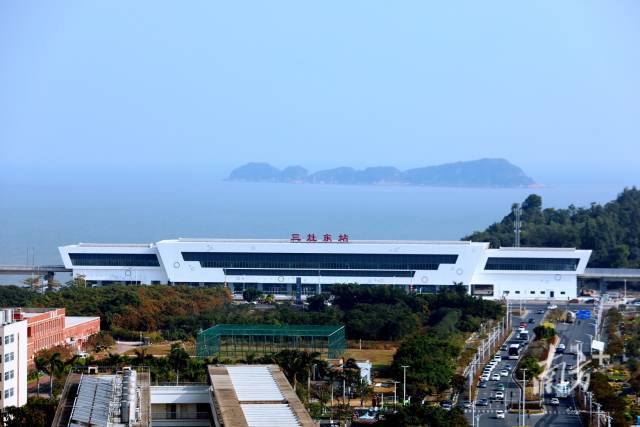At 7:30 am on February 3rd, the train S3824 departed from Zhuhai Airport Station, heading towards Zhuhai Station, marking the start of official operation of the Chimelong Zhuhai - Zhuhai Airport section of the Zhuhai - Zhuhai Airport Intercity Railway (shortly referred to as "Phase II of Zhuhai-Zhuhai Airport Intercity Railway"), which connects seamlessly with Phase I of the line. This is the first railway line opened in the Guangdong-Hong Kong-Macao Greater Bay Area this year.

Extending westward from Zhuhai Chimelong Station, the Phase II of Zhuhai-Zhuhai Airport Intercity Railway traverses the Dahengqin Mountain, crosses the Modaomen Waterway and Baiteng River Waterway, and finally arrives at Sanzao Town in Jinwan District, where it connects to the comprehensive transportation hub of Zhuhai Airport and reaches Zhuhai Airport Station. With a length of 22.8 kilometers, the newly constructed mainline is a double-track electrified railway designed for a maximum speed of 160 kilometers per hour. The line includes four stations, named Jingwan Station, Hezhou South Station, Sanzao East Station, and Zhuhai Airport Station. Among them, Hezhou South Station is a reserved station, and Zhuhai Airport Station is an underground one.
The Phase II of Zhuhai-Zhuhai Airport Intercity Railway was designed by China Railway Siyuan Survey and Design Group. Since the construction started in 2018, China Railway Guangzhou Group and Guangdong Provincial Railway Construction Investment Group have deepened cooperation and worked together to overcome the challenges of tight schedules, heavy tasks, and high construction difficulties through a scientific approach to coordinate progress and optimized construction plans, thus ensuring the high-quality and rapid advancement of the project.
The bridge-and-tunnel ratio of the entire Phase II of Zhuhai-Zhuhai Airport Intercity Railway reaches a remarkable 98.9%. As a key part of this project, the Zhuhai-Xijiang rail-road bridge connects the Hengqin New Area with Zhuhai Airport, spanning the Modaomeng Waterway and Niwanmeng Waterway through a combined road and rail bridge. This bridge is unique as it employs a cable-stayed bridge design with four steel towers, allowing both road and rail to be at the same level. The intercity railway in the middle allows a maximum speed of 160 kilometers per hour, while the two sides accommodate a six-lane expressway with a speed of 100 kilometers per hour. The main beam adopts a steel box girder structure with large cantilevers extending 16 meters on each side. The bridge boasts a total width of 49.6 meters, making it the widest one of its kind in the world.

The Zhuhai-Xijiang rail-road bridge features a steel tower design, arranged in an inverted Y shape both along the longitudinal direction and transverse direction of the bridge. This type of steel bridge tower boasts good seismic performance and meets the stiffness requirements of the structural system while facilitating the connection between the bridge towers and the main girders. Considering that the bridge site is located at the mouth of the sea, where marine construction conditions are harsh with low efficiency, the adoption of steel towers provides good adaptability. The overall hoisting and installation process reduces on-site workload and high-altitude operations, significantly shortening the construction period.
During the initial operation period, the railway department will operate up to 38 train pairs daily. Among them, there are 35.5 train pairs between Zhuhai Airport and Zhuhai Station, with the fastest travel time of 36 minutes. Trains from Guangzhou South Station to Zhuhai Airport will gradually commence service from February 5th, with the fastest travel time of 113 minutes.
As an extension of the Guangzhou-Zhuhai Intercity Railway, the Zhuhai-Zhuhai Airport Intercity Railway plays an important part in the rail transit network in the Pearl River Delta. The opening of its Phase II is of great significance in facilitating public travel, optimizing the business environment, and promoting close cooperation between Guangdong, Hong Kong, and Macao. It will further advance transportation connectivity and interactive development and accelerate the construction of the rail transit network in the Greater Bay Area.


